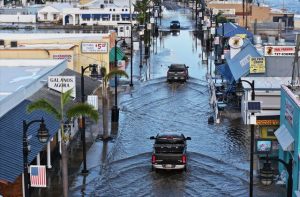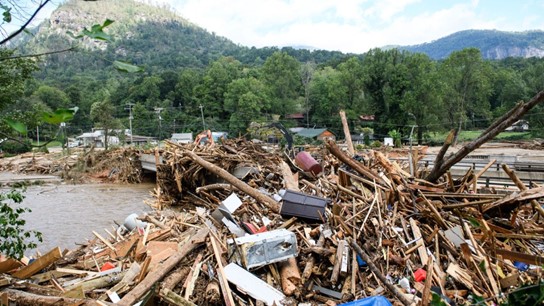According to CNN, in just 48 hours, vast swaths in Florida to Virginia became unrecognizable; Reaching land on September 26, 2024, Hurricane Helene caused a minimum of 130 deaths and communities were cut off as floodwater washed away hundreds of buildings, homes, and people, across at least six states. The devastation started at Florida’s Gulf Coast as it traveled inland, eventually toward Tampa Bay, where water rose six feet high, submerging vehicles and buildings. West of Tampa in Pinellas County, the county sheriffs waded through rising waters searching for residents in the area.
As the hurricane moved into Georgia, it was classified as a Category 2 hurricane (on a scale from 1-5). Hurricane Helene reached its peak intensity near the Big Bend region of Florida with sustained winds of 140 miles per hour. As the hurricane moved inland, it lost intensity and was a post-tropical cyclone over Tennessee on September 27, five days after its formation.

Geologic and geographic conditions, along with near perfect winds, allowed Hurricane Helene to form. It was exceptionally large; bigger hurricanes pull more water along with it, naturally causing more floods to occur. Environmental scientist Rick Luettich gave his thoughts on the issue: “as Helene moved over the Gulf [of Mexico], and particularly as it started to make landfall, it was over very warm water. That helped it rapidly develop a very strong core.”
Hurricane Helene’s destruction caused effected areas to be more susceptible to future floods, Luettich added, “Our barrier islands, which are typically made of sand dunes, are a primary defense against flooding. When a storm like Helene comes along and damages or overwashes them, then a later, lesser storm event can flood areas that would otherwise be protected.”









